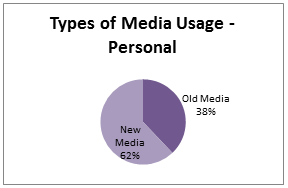To some extent, we all live in our own little worlds. Granted,
some of us are more off-with-the-fairies than others, and I’ll be the first to
admit that I don’t always have both feet on the ground. But our little worlds,
the way we see things, shape our worldview, and the way we see others. All too
often though we get comfortable there, because things are nice and familiar and normal
and right. We hold on tight to our
little slice of reality, and bite back fiercely at anyone who dares to question
or try and change it. Slowly though, and I think a little scarily, we can
become close-minded. Our little worlds stop growing, and our worldviews stay
set.
In my lecture this week, which took place in the comfort of
my own bed, I listened to Richard Fidler and Steve Austin talk about radio. Each
of them talked about their experiences as radio hosts, and about the kinds of
things you need to do on radio. But something that struck me
was the idea that radio, through conversation, allows us to see into other
people’s lives, and into their little worlds. Listening to other people’s
stories tells us so much about the world around us, and can open our eyes to
different ways of seeing things. But sometimes we close our ears to other
people, because we don’t like what they’re saying, or we don’t agree with them.
Radio is one of the oldest media forms, and you’d think it
might be on a decline by now. And granted, people don’t tend to huddle around
the radio any more to get their nightly news. But people still listen to the
radio, whether they’re in the car on the way to work, doing something at home
or most recently, through podcasts. Steve Austen said that sometimes you just have
to “talk less, and listen more” and radio
allows us to do that. We get to sit back and listen to what others have to say,
get a little slice of their world, and compare it with our own.
Richard Fidler said something very interesting. He said to “be
open-minded. Expose yourself... to thoughts and ideas you don’t agree with…try and
expand your worldview as much as possible.” I think this is a challenge worth
trying. Listen to the radio, dive into a book, and ask questions. Try and see
inside other people’s little worlds, and expand yours. Because when it comes to
worldviews, the bigger the better. Don’t get me wrong: you don’t have to agree
with everyone. Just try and see the world from a different point of view. I
think that’s what really good story telling and journalism does: it allows people
to see the world in a way they hadn’t before. When this happens, our
little worlds keep growing, and we can stop ourselves from becoming close-minded
and stubborn. So take a step inside the world of someone different to you, and
have a look around. You might like what you see.





